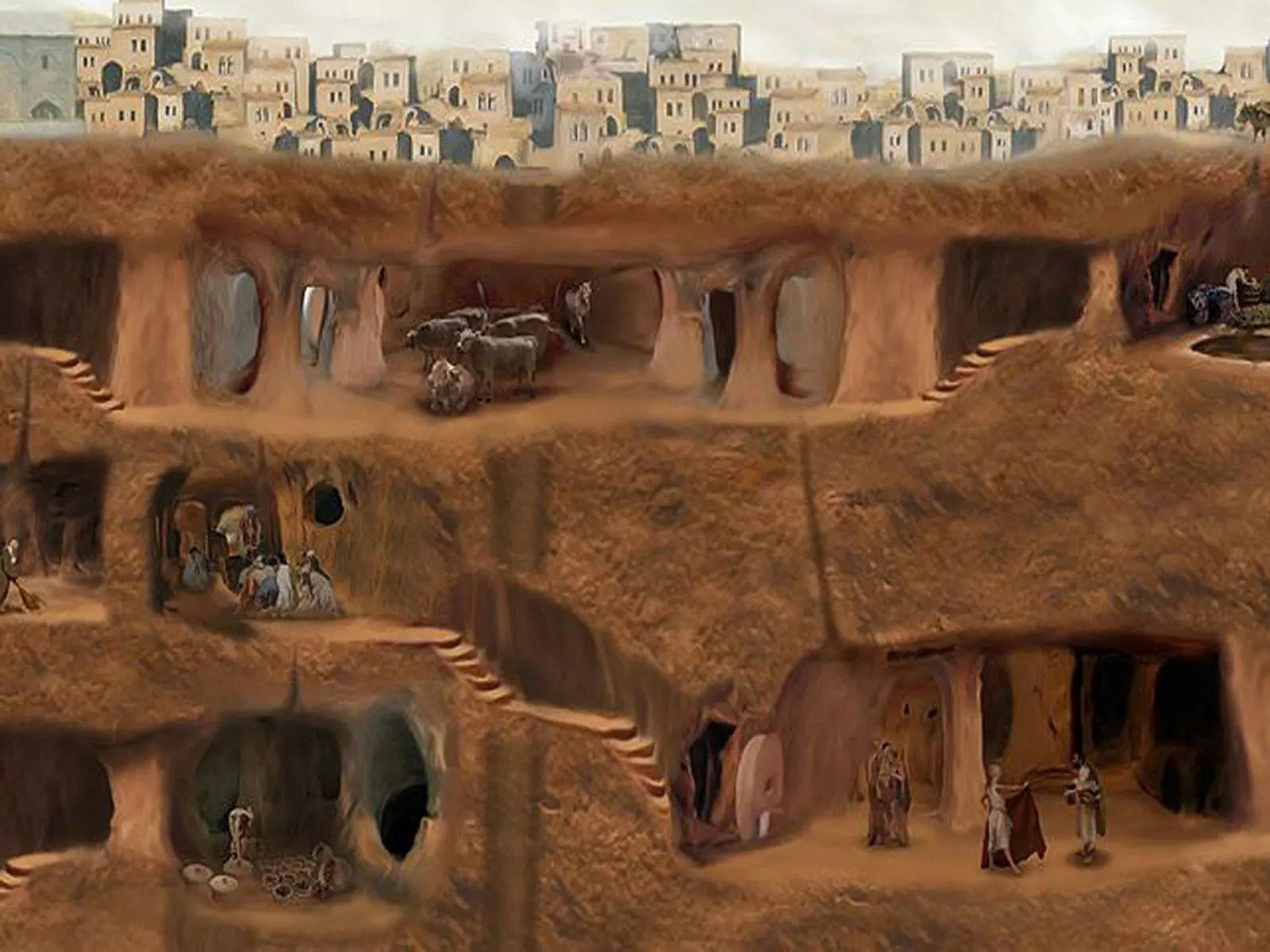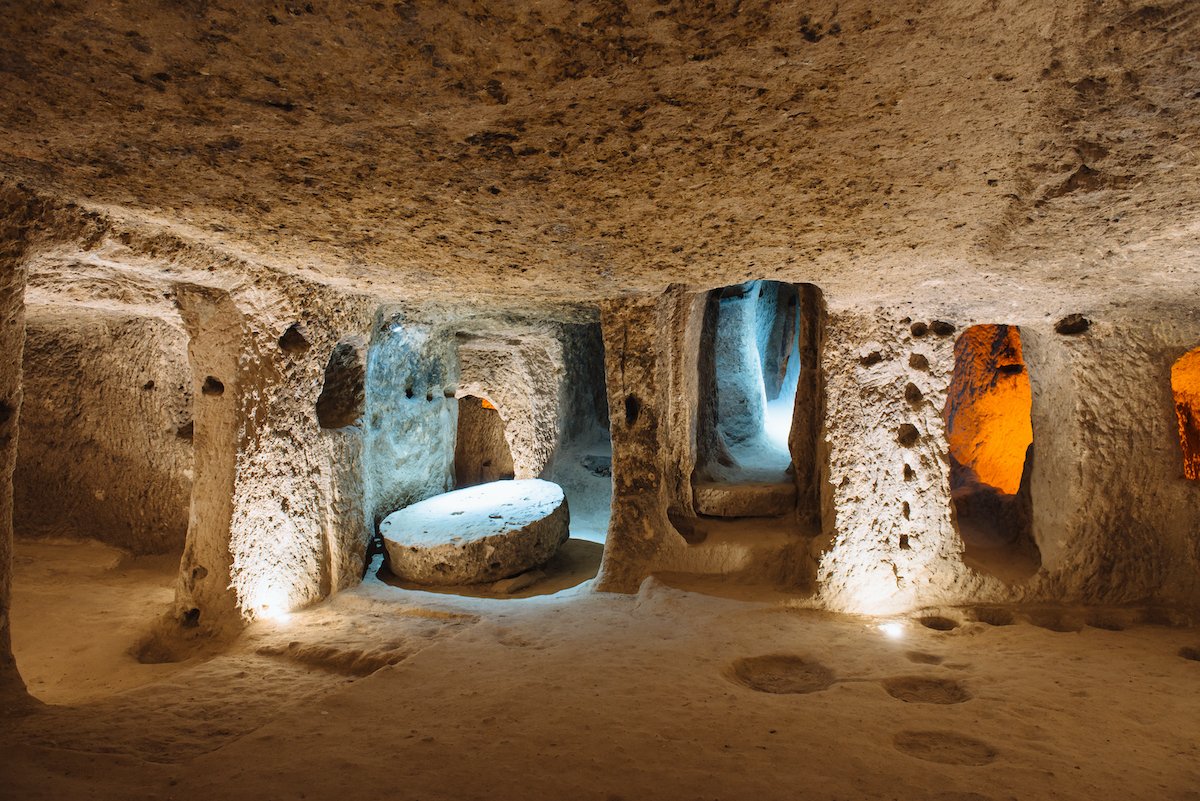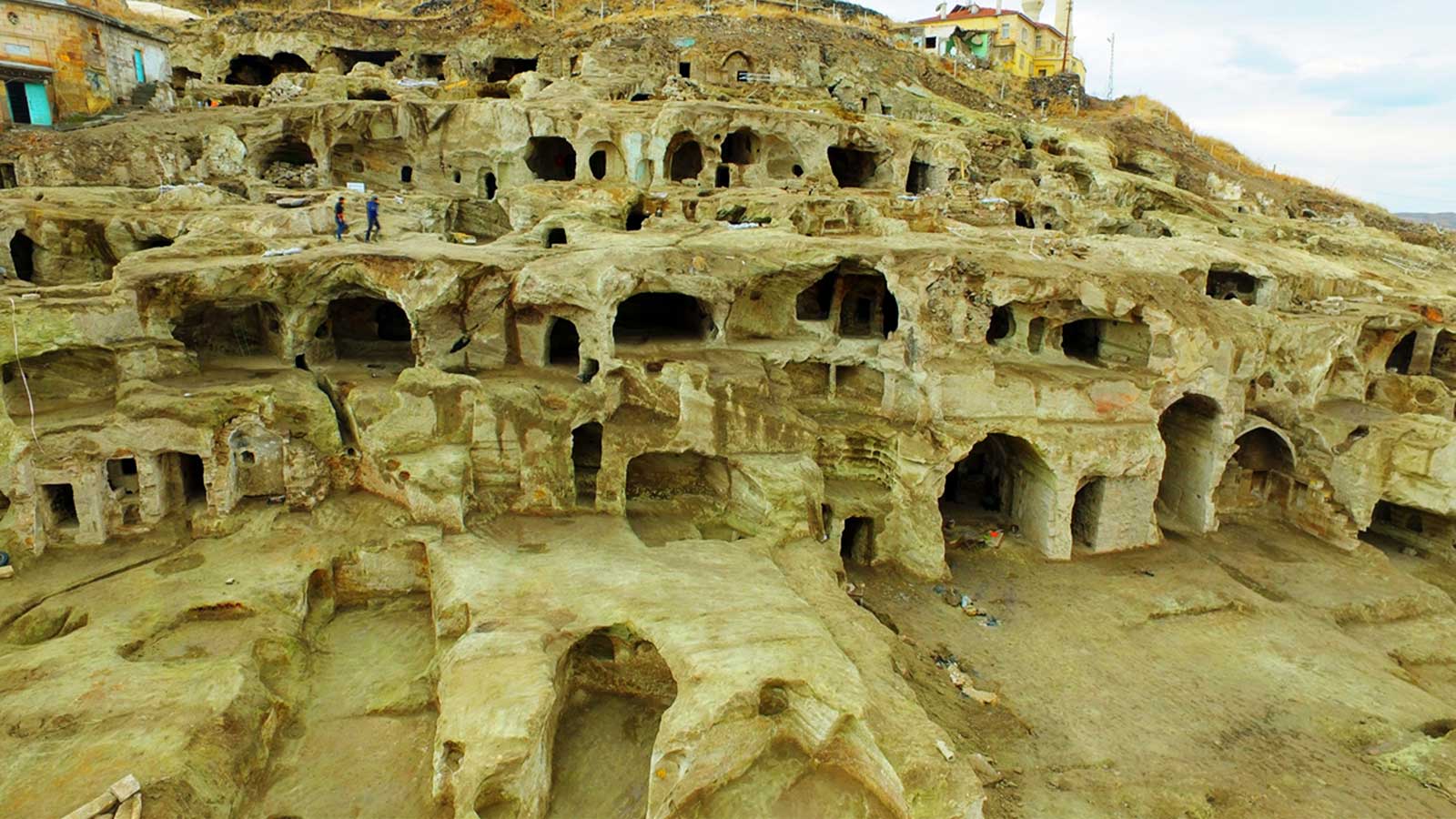The underground is as enchanted as the above ground in Cappadocia! So much that you can get on balloons and walk to the sky and valleys, go down to natural miracles and underground cities and touch the mystery of history. In Cappadocia, besides hundreds of fairy chimneys that have risen upright from centuries-old journeys, there are 36 underground cities with roots like a tree. Derinkuyu Underground City is the biggest of these cities!
You can find all the details about Derinkuyu Underground City in our article. The best method we can recommend to see Derinkuyu underground city is to join the Green Tour, Ihlara Valley tour. In this way, you can both have a wonderful walk in Ihlara Valley and see this very important underground city. There are many advantages of participating in day trip tours in the Cappadocia region. You can get detailed information with a professional guide and see museums, valleys and underground cities at different distances during the day. 
In addition, you can contact us from the reservation page to plan your Cappadocia holiday program together. Now, let’s examine Derinkuyu underground city together.
What’s Inside?
It is believed that the underground city was built as a shelter that is not to be seen from above, for the Christian community to escape from the pressure of the Roman Empire and Arabs.
Derinkuyu Underground City has 8 levels underground carved from the soft volcanic stone that are connected with each other by narrow tunnels.
Visitors may visit stables, cellars, storage areas, refectories, churches and wineries that all intertwined in an extensive network of tunnels. Also visitors may see the missionary school and study rooms on the second floor.
It is very exciting to imagine that how people lived here. The oxygen ratio never changes no matter at what level you are. A visit to Derinkuyu Underground City is a must on your Cappadocia holidays.
It will take about an hour for you to visit all the Derinkuyu Underground City. Visitors having claustrophobia are not recommended to enter the underground city.
How was Derinkuyu discovered?
The underground city of Derinkuyu was discovered in 1963 when a guy decided to do some home renovations and knocked down a wall.
 He was surprised to discover a hidden passage beyond which led to a room and more passages. He continued to explore and found a complex tunnel and cave system and ultimately a massive subterranean city carved into volcanic rock. The man had discovered the ancient underground city of Derinkuyu.
He was surprised to discover a hidden passage beyond which led to a room and more passages. He continued to explore and found a complex tunnel and cave system and ultimately a massive subterranean city carved into volcanic rock. The man had discovered the ancient underground city of Derinkuyu.
Floors of Derinkuyu Underground City
You begin your tour of this mysterious underground city of Cappadocia by entering through a narrow passage. Just like in Kaymaklı Underground City, there is the 1st Floor about 5 meters below the ingeniously hidden corridor-shaped entrance.
This floor, which consists of the barn, kitchen, winery and living rooms, is the top floor of the underground city. You will start to look for the answer to the questions of how the tuffaceous land special to the region was carved so skillfully in those periods when the engineering was not yet known, and how the ventilation could be done from the top to the bottom with the air channels you will see, as the floors begin to descend and you will be even more surprised.
When you come to the 2nd floor, you will be greeted by living rooms, food stores, kitchen and a partition used as a barn on the first floor.
The center of the ventilation spaces that go down to all floors of the underground city and provide air circulation is in the 3rd floor. You will see the Missionary School, which separates Derinkuyu from other underground cities and puts it in a different place, on this floor. You will recognize the school from its wide ceiling covered with a barrel vault. On this floor, which is the common gathering place of the underground city, there are also areas such as the cross-shaped church, confessional areas and cemeteries. If you are wondering where the 9-kilometer long tunnel that you will look at from the end goes, it is said to be the gateway to other underground cities, especially Kaymaklı Underground City. This tunnel, where 4 people can walk side by side without bending or twisting, has a 2-meter-high ceiling and almost evokes today’s subways.
Unique to Derinkuyu
On the second floor a barrel-vaulted ceiling tops a spacious room believed to have been a religious school. Rooms to the left provided individual studies.
A staircase between the third and fourth levels takes visitors to a cruciform church measuring approximately 65 x 30 ft (20m x 9m) in size.
A large 180-ft (55m) shaft (pictured above) was likely used as the primary well – both for residents underground and on the surface. To prevent any surface aggressor attempt to poison drinking water, control of the water supply originated from the lower floors and moved upward, with lower floors able to cut-off supply to upper levels.
On the third level a 3 mile-long (5 km) tunnel connected Derinkuyu to nearby underground city Kaymakli – although it is no longer functioning as parts of this tunnel have collapsed.






